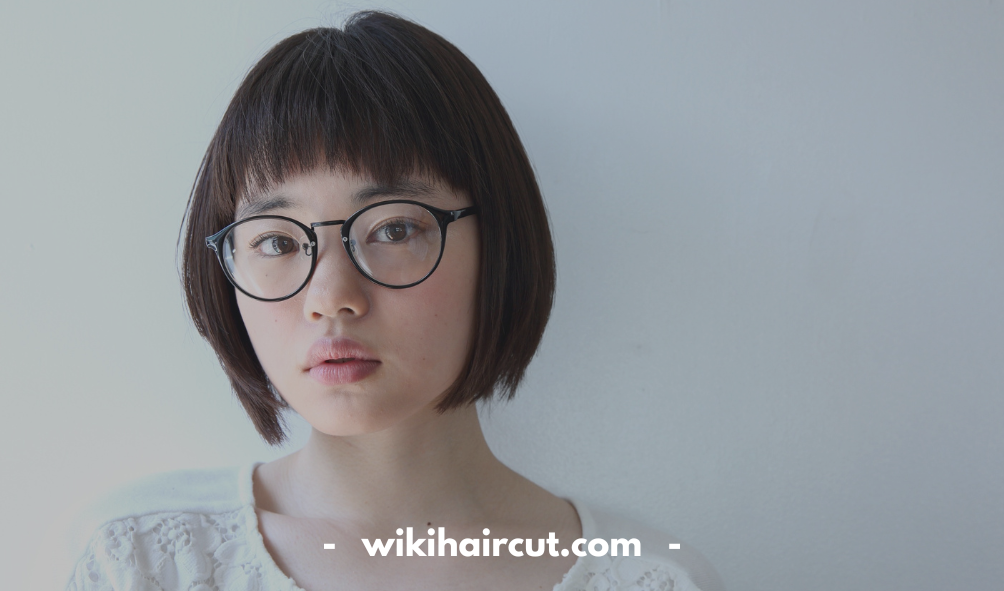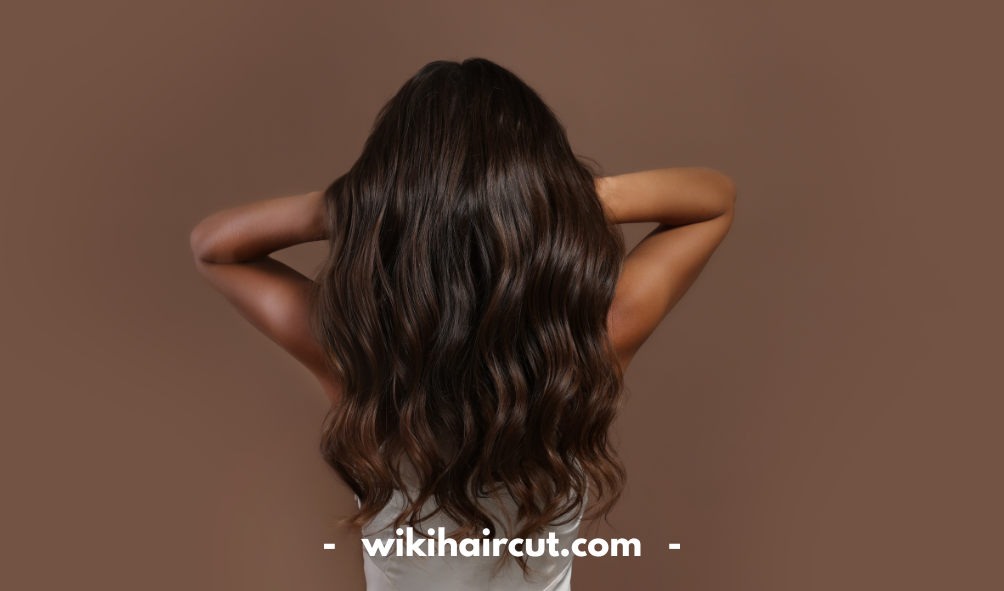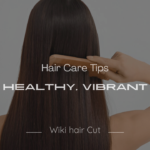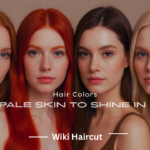Let’s be real—growing out short hair isn’t always a smooth ride. One day you’re loving your edgy pixie cut, and the next, you’re staring in the mirror wondering how to tame the awkward flip happening on both sides of your head. We’ve all been there, haven’t we?
The good news? With the right approach, growing out short hair can be an empowering and exciting transformation rather than a frustrating mess. Whether you’re looking to turn your short ‘do into a lush bob or flowy waves, you’re about to discover everything you need to know to grow your short hair like a total pro.
Overview of What You’ll Learn
From understanding hair growth cycles to discovering cute ways to style short hair while it’s growing out, this guide will take you through each phase—awkward ones included. We’ll also cover how to grow your hair out gracefully, tackle different hair textures, and keep your sanity (and strands) intact.

Understanding Hair Growth Basics
The Natural Hair Growth Cycle
Hair doesn’t just grow overnight (unfortunately). Every strand goes through a cycle: Anagen (growth), Catagen (transition), Telogen (rest). The anagen phase is where the magic happens, and this stage can last years!
How Long Does It Take to Grow Out Short Hair?
That depends on how short your hair is and your desired length. On average, hair grows about half an inch per month. So if you’ve got a pixie and want a bob? Expect at least 6–8 months. Growing to shoulder length? You’re looking at 12–18 months of steady care.
Factors That Affect Hair Growth Speed
- Genetics
- Diet and overall health
- Age
- Hair care routine
- Stress levels
Preparing for the Hair Growth Journey
Setting Realistic Expectations
This isn’t a sprint—it’s a marathon. Some days it’ll feel like your hair’s stuck, but trust the process. Set mini-goals (hello, chin-length bob!) and celebrate small wins.
Keeping a Growth Journal or Photo Diary
Taking progress pics every month can boost your motivation. You might not see it day-to-day, but the side-by-side results? Game-changing.
How to Grow Out Short Hair Gracefully
Start with a Plan
Growing your hair without a clear plan leads to frustration. Decide early if you’re aiming for a bob, shoulder-length cut, or longer. This goal will guide your trims, styles, and maintenance strategy.
Get a Professional Trim Schedule
It might sound counterintuitive, but regular trims every 8–10 weeks help shape your hair, remove split ends, and reduce breakage. Ask your stylist to shape it without losing length unnecessarily.
Accept the Awkward Stages
Some days will feel rough. Your hair might flip out at the ends, or your bangs won’t cooperate. That’s completely normal. Styling tricks, headbands, or accessories can turn awkward into intentional.
How to Grow Out Short Hair Fast
Feed Your Follicles
Healthy hair starts from the inside. Eat a balanced diet rich in:
- Biotin (eggs, almonds)
- Protein (chicken, lentils)
- Iron (spinach, red meat)
- Omega-3s (salmon, flaxseed)
Massage Your Scalp Daily
Scalp massages improve blood circulation, which can stimulate growth. Use your fingertips and gently massage in circular motions for five minutes daily. You can add hair oils like rosemary or castor oil for even more benefit.
Protect from Heat and Damage
Avoid flat irons and curling wands where possible. If you must use heat, apply a thermal protectant spray. Also, sleep on a silk or satin pillowcase to reduce friction and split ends.
Haircuts That Help With Growing Out Short Hair
How to Cut Short Hair to Grow Out Gracefully
Yes, you still need trims. Sounds counterintuitive, right? But regular, strategic trims prevent split ends and shape your hair as it grows.
The Power of the Trim
Every 8–10 weeks, ask your stylist to reshape, not shorten. Clean up the nape, even out sides, and maintain structure.
Transitioning into a Bob Cut
A layered bob is often the next natural step from a pixie. Ask your stylist for layers that grow in softly and make styling easier.
How to Style Short Hair Growing Out
How to Style Short Hair When Growing It Out
This is where creativity kicks in. Try using:
- Texturizing sprays to add volume
- Pomades or pastes for control
- Mini straighteners or curling wands for waves
Everyday Styles for Awkward Hair Lengths
- Side part + barrette for shape and control
- Messy bun (yes, you can!) with tiny elastics
- Half-up styles to tame unruly strands
How to Style Short Hair as It Grows Out
Hair wraps, bobby pins, headbands, and braids become your besties. Think of it as accessorizing through the awkward phase.

Stages: How to Grow Out Short Hair Gracefully
Stage 1 – The Pixie Phase
Keep it textured and neat. Use lightweight styling creams or mousses to give it personality without helmet-head vibes.
Stage 2 – The Awkward In-Between
It’s not a pixie, not yet a bob. Time for strategic layers, creative styling, and accessories. Embrace the chaos with messy waves or slicked-back looks.
Stage 3 – The Bob and Beyond
Now you’ve got options! This is when you’ll really notice the transformation. Try a lob (long bob) or soft curls.
Must-Have Products for Growing Out Short Hair
Growth-Boosting Products
- Biotin shampoos
- Castor oil treatments
- Scalp serums with caffeine or peptides
Styling Essentials for Managing Length Changes
- Dry shampoo for volume and freshness
- Hair clips, bands, and pins
- Texturizing sprays and creams
How to Deal with Growing Out Short Hair
Coping with Frustration
Yes, you might want to chop it all off again. Don’t. Deep breaths, new styles, and distraction are your weapons.
Staying Motivated During Slow Growth Phases
Follow hair bloggers on a similar journey. Connect with communities. Set photo reminders. Progress is still progress!
Hair Care Tips to Grow Out Short Hair Fast
Scalp Care for Healthy Hair Growth
A healthy scalp = healthy growth. Use:
- Scalp massagers
- Tea tree oil or peppermint shampoos
- Weekly clarifying treatments
Diet and Supplements That Support Hair Health
Eat for your hair! Include:
- Protein
- Omega-3s
- Biotin and zinc
Avoiding Breakage and Split Ends
- Use satin pillowcases
- Limit heat tools
- Detangle gently—especially when wet
How to Grow Out Short Curly Hair
Special Considerations for Curly Hair Types
Curly hair shrinks more, so growth appears slower. Keep it moisturized and detangled.
Best Styles for Curly Hair During the Growing Phase
- Twist-outs and braid-outs
- Wash and go with gel
- Pineapple updos

How to Grow Out Bangs with Short Hair
Tricks for Blending Bangs as They Grow
Use a side part or twist them into braids. You can also pin them back or curl them slightly to blend with the rest.
Styling Hacks to Mask Awkward Bangs
Try clipped-back styles, headbands, or layered fringe that transitions easily into face-framing pieces.
How to Grow Out Short Hair for Different Genders
For Women – Feminine Styles That Evolve
Layered bobs, beachy waves, half-up styles, and side-swept bangs offer endless style evolution.
For Men – Keeping It Clean and Sharp
Let the top grow while tapering the sides. This creates shape and avoids the “mushroom” look.
For Black Males – Textured Hair Tips
Keep hair moisturized, avoid over-brushing, and consider protective styles like twists or short locs.
Dealing with Setbacks and Fixing Mistakes
How to Fix Short Hair Growing Out
If you experience uneven growth or breakage, visit a stylist. Don’t DIY major cuts—a professional shape-up can save your look.
When to Seek Professional Help
If your hair looks lifeless or refuses to grow past a point, consult a dermatologist or trichologist.
How to Grow Out Short Hair into a Bob
Timing the Transition
The best time to switch is when hair reaches the chin. Your stylist can add shape and volume to create the illusion of a fuller bob.
Styling Ideas as You Shift into Longer Looks
Try loose waves, blunt ends, or center parts to show off your new length.
Inspirational Stories and Success Tips
Real People, Real Growth Journeys
Many started from pixie cuts and reached flowing locks. It took time—but with patience, routine, and love, they made it.
Lessons They Learned the Hard Way
- Don’t skip trims
- Accessories are lifesavers
- Avoid the temptation to give up mid-journey
How to Grow Out Short Curly Hair
Moisture Is Everything
Curly hair is naturally dry. Use leave-in conditioners, curl creams, and deep treatments weekly.
Avoid Frequent Trims
Unlike straight hair, curly hair doesn’t show split ends as quickly. Stretch your trims unless there’s visible breakage.
Protective Styles Work Wonders
Styles like twist-outs, braids, and pineappling at night help curls grow with less damage.
How to Grow Short Hair Out for Females
Use Hair Masks Weekly
Look for masks with strengthening ingredients like keratin, argan oil, and collagen.
Minimize Stress
High cortisol levels from stress can lead to thinning. Prioritize sleep, relaxation, and self-care.
Document Your Journey
Take monthly photos to track progress. This not only boosts confidence but helps you spot what’s working.
Conclusion
Growing out short hair is a journey full of twists, flips, and a little frustration. But with the right plan, styling tips, and hair care routine, it’s entirely possible to make every stage look intentional—and even fun. Whether you’re working toward a sleek bob or long, flowing layers, patience and consistency are your best tools. Don’t rush the process, celebrate the milestones, and enjoy the journey to longer hair.
FAQs
1. Can I grow out short hair without cutting it?
You can, but occasional trims to remove split ends are important to prevent damage and promote healthier growth.
2. What is the hardest stage of growing out short hair?
The shaggy, in-between phase is often the toughest. It’s when styles feel uneven, and your hair may not cooperate.
3. Does hair grow faster when trimmed regularly?
Trims don’t increase the speed of growth, but they do prevent breakage, helping you retain length over time.
4. How do I style short hair when it’s too long to spike but too short for a ponytail?
Try slicking it back, using a headband, or going for a textured tousled look using mousse or paste.
5. How often should I wash my hair during the grow-out phase?
It depends on your hair type, but typically 2–3 times a week is ideal. Overwashing can strip natural oils, while underwashing can lead to buildup.











 by Ideavire
by Ideavire